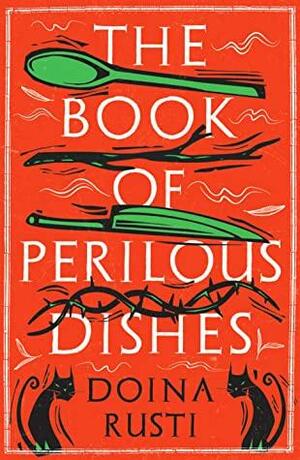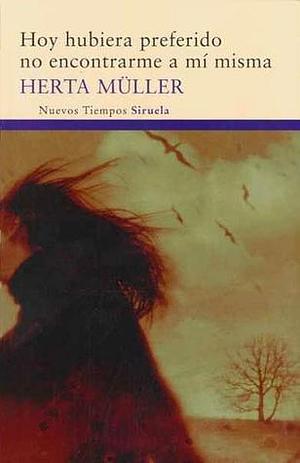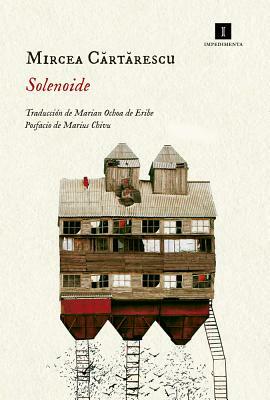I am starting with brown bears because they are the closest to my heart, as my country has one of the biggest bear populations in the world. Romania has between 6700 and 10000 bears (brown bears, also known as Carpathian bears), depending on the source, one of the biggest numbers in Europe. They visit cities and public roads quite often; you can find them all over the internet. They are an important part of our culture, being an active part in the winter traditions. You can see some bear footage by following the Romanian national parks (
here,
here or
here),
an NGO and a
bear observatory on social media and find more about the bears winter traditions following
this page, see some cool
clips here and a documentary
here. 📚
Suggestions of books / authors : A. Romanian books/authors available in other languages (a few examples, there are many more):
· Mircea Eliade – is a Romanian interwar writer and philosopher, who had most of his philosophical works centered around sacred and profane and history of religions (after Second World War he was the head of the department of history of religions at Chicago University). His literature was strongly influenced by his philosophy, as well as a travel in India in his youth. Please also keep in mind that in his youth he had some fascist sympathies (not so much reflected in his literature). You can find his books in English, French, Italian, Spanish, German etc
· Mircea Cărtărescu – is a contemporary writer who is always on the betting lists for the Nobel prize. He is really popular in South America, and you can find his books in almost all European languages.
· Doina Ruști - is a contemporary writer who was translated in multiple languages, as Spanish, French, Italian, German, English and Chinese. She writes historical fiction, realist fiction and magical realism as well.
·
Eugen O. Chirovici – is a Romanian journalist, who also worked as an economist for World Bank. He has published books in fields as economy, history and politics. His most famous books are fiction books, “The book of mirrors” and “Bad blood”, both published first time in UK, in English. “The book of mirrors” was made into a movie, with Russel Crowe as a protagonist, that will be in cinema starting March 2024 (trailer
here).
· Andrei Codrescu – is a Romanian writer that lives in USA. It was Professor of English at Louisiana State University from 1984 until his retirement, and all his works after the age of 20 (poetry and novels) have been published in English first.
· Nina Cassian – was considered “the most attractive ugly woman from Romanian literature” and she considered herself “a decadent poet”. Her poetry was not seen as good comportment by the communist regime, so she published a lot of children’s literature, that was accepted. In 1985 she managed to emigrate in USA. Almost all her works are available in English, and some have also been translated in Italian and French.
· Martha Bibescu/Bibesco – was a Romanian noblewoman writer. Her father was the Romanian government representative in France, and she spoke French as a native. She lived in Paris, where she was a usual guest of all fashionable and literary groups, and she remained there after the communist party took the power in Romania. Most of her works have been published first in French. You can also find them translated in English, Italian, Spanish and Polish.
· Eugen Ionescu/Ionesco - was one of the foremost figures of the avant-garde theatre and absurd theatre in the 20th century. He spent most of his childhood in France with his parents but come back in Romania at 16. He moves in France for good in 1942. He was made a member of the Académie française in 1970 and in 1964 was nominated for a Nobel prize. All his works after 1935 are available in French, and most of them have been translated in other European languages too.
· Ana Blandiana – is a Romanian poet and anticommunist dissident. She was one a few persons that lived in Romania before the ’89 revolution and had the courage to make declarations and give interviews against the dictator Nicolae Ceausescu. Along with his poetry, she is working with the civil society for protecting human rights and for raising awareness regarding totalitarian crimes. Her poetry and essays were translated in multiple languages.
· Gellu Naum – was the founder of Romanian surrealist group. Due to the restriction of the communist regime, he was able to publish just children literature for more than 20 years. Some of his works have been found and published after his death, even if have been written in the ’40. His works have been translated in German, French, Italian, Dutch.
· Nicole Valery Grossu – was a minor political figure (related to one of the interwar prime ministers of Romania), anti-fascist fighter and member of the National Peasant Party. She was arrested multiple times by the communist regime and manage to flee to France in 1969. She published her memoires and other Christian magazines. Her memoires, about being a Christian in the communist prison, have been published in French, English, Italian, German and Norwegian.
· Richard Wurmbrand – was a Romanian Lutheran priest, of Jewish descends. He studied Marxism in Moscow and was a communist agent. In 1938 he and his wife (Sabina) converted to Christianity and made declarations against communism. After the communist party took over both were arrested and spent over 14 years in prison. In 1964 the Norwegian Mission to the Jews and the Hebrew Christian Alliance negotiated with Communist authorities for his release from Romania for $10,000. He moved to the USA and in 1965 he testified before US Senate regarding the torture suffered in communist prisons. He wrote over 18 books in English and many more in Romanian. His most well-known book, “Tortured for Christ”, was translated in 65 languages.
· Oliver Lustig – was a Romanian from Transylvania who survived Auschwitz. Some of his memory’s books have been translated in Spanish and English.
· George Arion – is a Mystery and Thriller Romanian writer, the president of Romanian Crime Writers Club. The first book in his Andrei Mladin series was translated in English, French, Macedonian etc
· Emil Cioran - was a Romanian writer and philosopher, who start writing in the interwar period, representing the schools of philosophical pessimism and nihilism. He was also agnostic and his axiom was "the inconvenience of existence". At the beginning of his career, he had fascist sympathies (specially while studying in Germany) but after college started slowly disagreeing with the movement and in his later years he said about “the worst folly of my youth. If I am cured of one sickness, it is surely that one." In 1942 moved in Paris, and lived there for the rest of his life. All his works are available in French and English. Lacrimi și Sfinți (“Des larmes et des saints “/"Tears and Saints") was the one that got the biggest criticism from the Romanian fascist movement.
· Alina Nelega – is a Romanian contemporary dramaturg, writer and literary critique, who write both novels and plays. Her work was translated in English, French, German, Hungarian, Polish, Italian, Albanian, Bulgarian, Catalan.
· Queen Maria of Romania – granddaughter of Queen Victoria of Great Britain, she was the second queen of Romania, wife of king Ferdinand. She had an important role in international recognizing of Romanian war efforts in the First World War. She also wrote theatre, fairytales, poetry and her memoirs, all of them translated in French and English.
· Carmen Sylva/Queen Elisabeta of Romania – First queen of Romanian, born German, wife of king Carol I, had the pseudonym Carmen Sylva (the song of the forest in Latin). She wrote theatre, fairytales, short stories, poetry and memoires, available in English, French and German.
· Mihail Sebastian – was an interwar Romanian Jew writer and journalist. Initially he was part of an antidemocratic, anti-European movement, that transformed later into a fascist movement. He became a central figure in the literary space because his mentor wrote an antisemitic preface to one of his novels. Because of antisemite policies of the time, he was not able to publish anymore and his plays were not allowed on scene. He died in 1945, hit by a truck and his theatre work was considered his biggest legacy, until in 1996 when his journal was published. The Journal was showing that the interwar society, highly praised by Romanian elite after communism, was often antisemite and sometime even antidemocratic, bringing a needed call to reality. Most of his books are available in French and the Journal was translated in English as well.
· Dar Motan by Cristina Andone - is a kids book series about a cat named Dar (a pun, as Dar it means in Romanian both gift and the conjunction “but”) that was translated in Chinese
· Herta Muller - is a writer born in Romania in the German (swab) minority. Her mom was deported in a labor camp in the Soviet Union after World War II. She published her first novels in Romania, but in German language. The books have been censored by the communist regime. In 1987 she manages to emigrate in Germany. In 2009 she was awarded the Nobel prize for literature.
B. If you can read in Romanian, here are some books that have bears/bears in the title at least (some of these might be available in other languages as well):
· “Fram, ursul polar”
· “Ursul păcălit de vulpe” 😊
· “O poveste cu mama, tata, Mircea și ursul polar” by Mediana Stan and “Ursulețul pofticios” by Claudia Cojocaru - are available for free in Google Books
· “Ochi de urs” / “Ursul” by Mihail Sadoveanu (short story)
· “Cum e lumea” by Veronica D Niculescu (kids short story)
· “Frumoasa călătorie a urşilor Panda povestită de un saxofonist care avea o iubită la Frankfurt” by Matei Vișneac (short story)
· “În gura marelui urs” by Ana-Maria Lemnaru (graphic novel about the kids that have been in the communist prisons)
· “Ursul” by Adrian Oprescu (kids book)
· “Povestea ursului cafeniu” by Vladimir Colin
🧸️ About the brown bear: The bear is brown in color, but this varies greatly from black to brown and even yellow, depending on age, season and geographical area. It has a massive body and a clumsy walk, but in flight it exceeds the speed of man. It has poor eyesight, but excellent hearing and smell. When orienting itself, it stands up in a bipedal position. It lives in coniferous and deciduous forests, being active during the day. It feeds on both animals and plants. The bear eats according to the season. In spring it feeds mainly on the carcasses of wild animals that could not survive the winter, then on deer, roe deer, wild boars and domestic animals (sheep, cows, pigs). In summer it eats more fruits than animals (raspberries, blackberries, blueberries, cranberries), and in autumn its diet is almost exclusively vegetarian. In this way the bear can make a fat reserve for winter of up to 40% of its weight.





